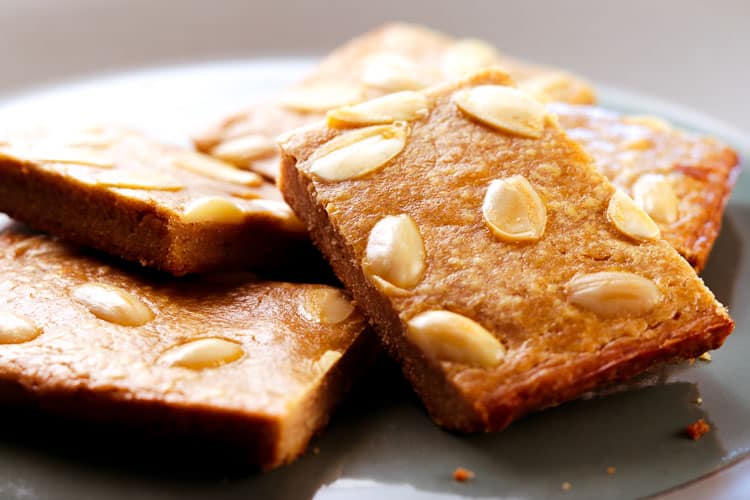This Dutch cookies recipe is a real treat. Known as Speculaas, it has special spices that reminds me of gingerbread.
December 6th is Saint Nicholas’ day, in the run up to which kitchens all over the Netherlands will be humming with the smell of baking speculaas cookies. Speculaas – known as speculoos in France and Belgium and spekulatius in Germany – are a kind of softer gingerbread biscuit bursting with spices and topped with almonds and are traditionally made to mark the saint’s day.
Also once a gift exchanged between lovers (all that ginger could be a potent aphrodisiac), speculaas is now pretty much considered the national Dutch cookie and can be found in shops worldwide throughout the year.
But nothing can beat making your own batch at home! (Even if it’s just for the aroma…)

SPECULAAS FOR SINTERKLAAS
Saint Nicholas, who in this case evolved into Sinterklaas, is the generous, benevolent patron saint of children. In the Netherlands, his holiday is a moment of gift-giving far greater than Christmas which is more given to spending time with family and going to church. As such, children all over the Netherlands wait out the night of the 5th December in frenzied anticipation, having left an offering by the fireplace for Sinterklaas’ in the hope of great recompense.
Morning usually brings jubilation when they kids find the hay and carrots they stuffed in their boots replaced with oodles of speculaas cookies. And some awesome gifts too; not a bad exchange.
THE ADVENT OF SPICE

THE NETHERLANDS’ SWEET TREATS FOR SAINT NICK
December 6th is Saint Nicholas’ day, in the run up to which kitchens all over the Netherlands will be humming with the smell of baking speculaas cookies. Speculaas – known as speculoos in France and Belgium and spekulatius in Germany – are a kind of softer gingerbread biscuit bursting with spices and topped with almonds and are traditionally made to mark the saint’s day.
Also once a gift exchanged between lovers (all that ginger could be a potent aphrodisiac), speculaas is now pretty much considered the national Dutch cookie and can be found in shops worldwide throughout the year.
But nothing can beat making your own batch at home! (Even if it’s just for the aroma…)
SPECULAAS FOR SINTERKLAAS
Saint Nicholas, who in this case evolved into Sinterklaas, is the generous, benevolent patron saint of children. In the Netherlands, his holiday is a moment of gift-giving far greater than Christmas which is more given to spending time with family and going to church. As such, children all over the Netherlands wait out the night of the 5th December in frenzied anticipation, having left an offering by the fireplace for Sinterklaas’ in the hope of great recompense.
Morning usually brings jubilation when they kids find the hay and carrots they stuffed in their boots replaced with oodles of speculaas cookies. And some awesome gifts too; not a bad exchange.
THE ADVENT OF SPICE
Festive gingerbread-type treats go back even before the colonial periods to the Middle Ages when ginger, cloves and nutmeg would already have been available to cooks in northern Europe, though the wider availability of other spices like cinnamon came later with the formation of the Dutch East India Company in 1602.
This was about the time that the first speculaas cookies would have been made, and was really the turning point for Dutch cuisine, since once-rare and expensive spices were now arriving on their home shores by the shipload. The spice boats were also docking on foreign shores, and with all the profit from their sales going in to Dutch coffers, the humble cinnamon stick and pepper clove became an emblem of the Netherlands’ flourishing prosperity in the 17th century, a wealth that soon transformed the country’s infrastructure, arts and sciences.
BLACK PETER
That this prosperity was won by often morally questionable means is another matter, and it’s not the only dark shadow cast by the symbol of speculaas. There’s been some recent controversy in the Netherlands around the character of Zwarte Pieten, Black Peter, who is traditionally Sinterklaas’ assistant.
No one is quite sure how long Zwarte Pieten has been around – some say since medieval times, some say he appeared in the mid-19th century – but we do know that he is Sinterklaas’ Moorish servant, brought to Spain by the saint on a boat. He has a blacked-up face and a curly wig with a ruff around his neck, and scoundrel character. He’s a figure that sits uncomfortably with those sensitive to the Dutch colonial past and to gaudy racial stereotypes.
ABOUT THE RECIPE
The speculaas recipe is a pretty simple cookie recipe. The Dutch version – which is the one we are featuring here – is generally a softer bite than say the Belgian speculoos, which tends to be harder and crunchier.
You’ll also notice that there’s a good amount of butter. Another side-effect of the Netherlands’ increased wealth in the 17h century was an uptick in dairy farming, which meant that dairy products, especially butter, were ubiquitous, and recipes started to shift to accommodate the new trend. This meant that a great deal of the menu, from meats to desserts, would be lathered in the stuff. You wouldn’t hear us complaining!
THE CHANGING FACES OF SPECULAAS
Shapeshifters by nature, Dutch speculaas cookies come in many different forms: most traditionally they are made to resemble Saint Nicholas himself in his traditional priest’s garb topped with a hefty mitre. Some people think this is where the name speculaas comes from – the Latin ‘speculum’, meaning mirror, could refer to the mirror image of the saint made in the cookies. It could also refer to the orgy of flavors contained in the dough, birthed from the Dutch word ‘sprecerij’ for spices.
Today, however, Sinterklaas is no longer the primary form of speculaas. As the cookies have come to be baked year-round and taken on more commercial appeal, they’ve also adopted other more secular shapes like windmills and farmhouses, animals and ships.
You can also bake the dough in sheets then carve it up into squares or chunks once it is cooked. Given the absence of any Saint Nicholas or windmill cookie cutters in our arsenal, we decided to plump for the square option, which we also liked because our inner control freaks could hold sway over portion sizes.
MAKING SPECULAAS
First up, get those ingredients ready. Speculaas spices are actually available as a pre-mixed concoction in the Netherlands, but purists get so much more of a kick out of putting the spices together themselves. We couldn’t help but linger on each and every smell that we measured out before adding the spices to the mix.
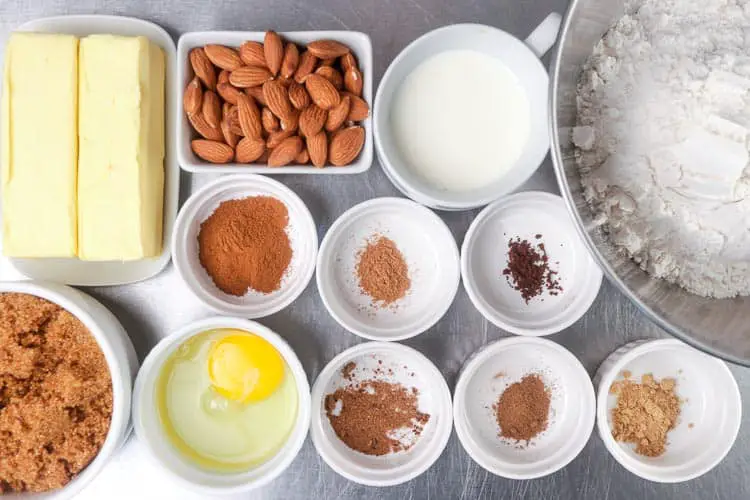
Mix the flour and the spices together in a large bowl with a whisk.
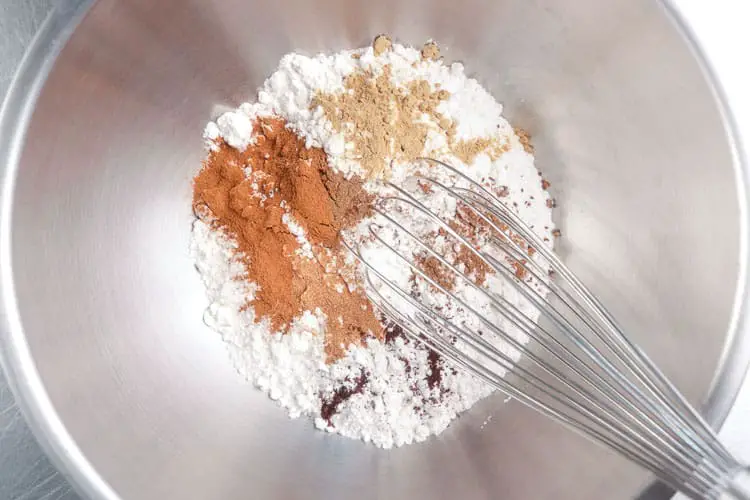
Add the sugar and mix it in well with the flour and the spices.
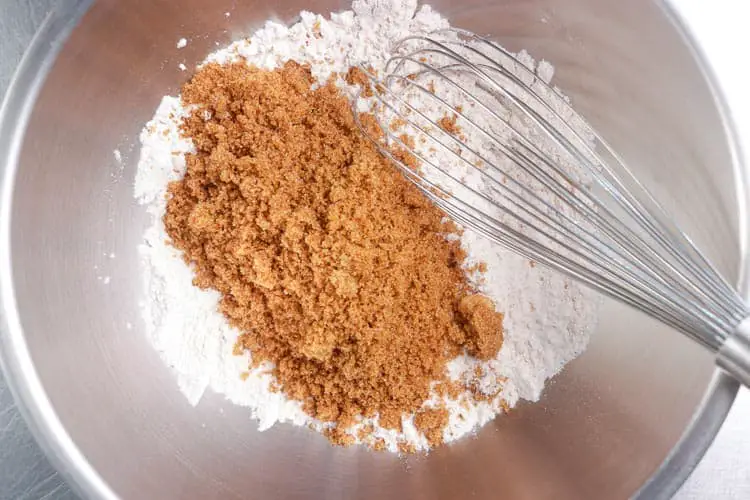
Start to knead in the butter. Be sure to use cold butter in order to keep the dough flaky, and don’t overwork the butter into the flour, as a more coarse, crumbly texture is really what you’re going for.
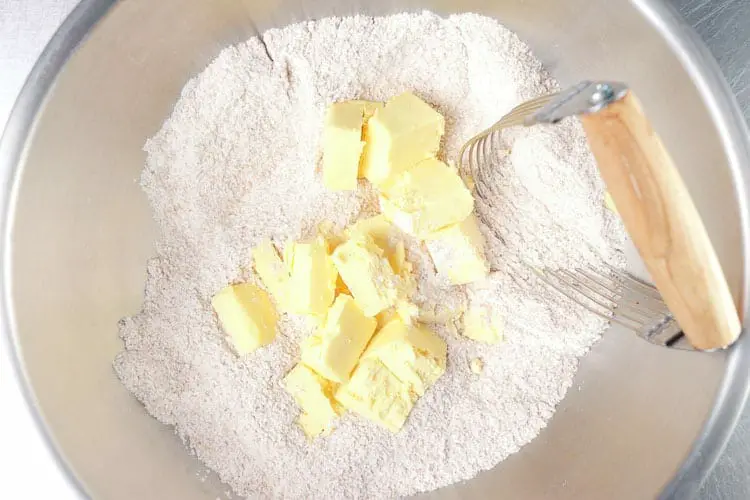
Don’t knead the dough too much, as you don’t want to heat up the butter. If you do feel that it’s a little warm by the time you get to rolling it out, you can cover the dough and put it in the fridge for up to an hour to cool it back down. If you’ve plenty of time, you can even leave the dough in the refrigerator overnight. This will really ramp up the flavors! When you’re ready, roll the dough out into a 1/4 inch thickness.

Try and keep the thickness of the dough even and lay it out in a rectangle on baking paper on a rimmed baking tray.
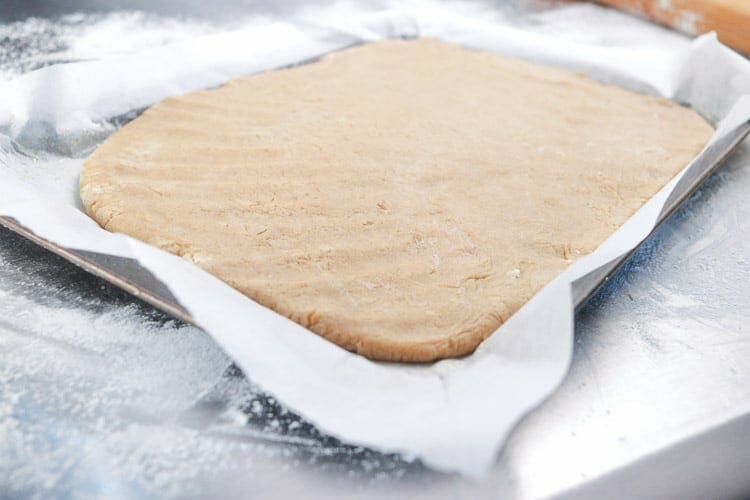
Whisk the egg with a tablespoon of milk.

Brush the egg and milk mixture over the dough.
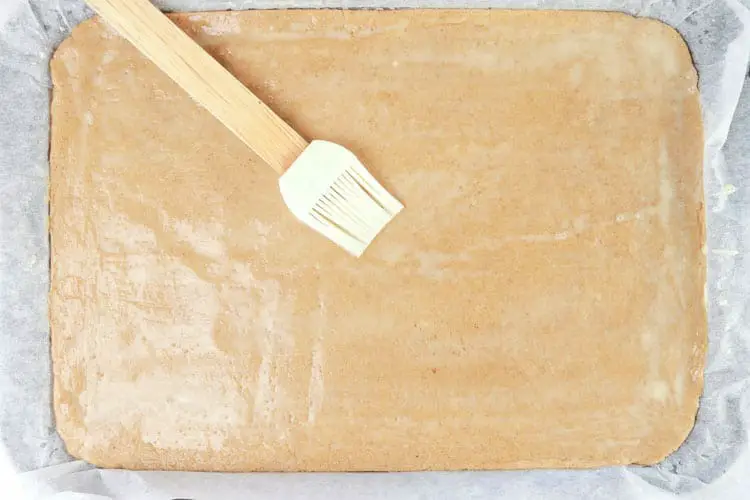
Press the almond halves into the dough and cover with another layer of the egg and milk mixture.

Bake in a preheated oven at 340F for 30 minutes. Let the dough cool down completely before cutting it up. Enjoy on Saint Nicholas’ day, during the run-up to Christmas, at Christmas, New Years and Epiphany, and then for the rest of the year until next December rolls around again.
Vrolijk kerstfeest!
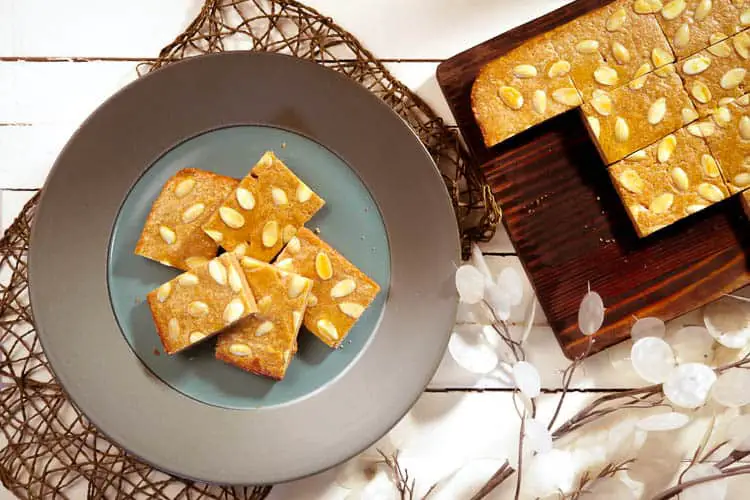
OUR TAKE ON THE RECIPE
With seasonal goodies like these, it makes sense to try and elongate the holiday season as much as possible. We loved our speculaas – buttery goodness that reminded us a bit of pie crust, was moist and wasn’t too sweet, which is always a bonus. We used dark brown sugar as recommended by our source recipe, however, we are aware that traditional renditions of the recipe call for vergeoise brune, which is a Belgian brown sugar made from beets with a hint of butterscotch.
Did we mention the smell? Our whole house smelled like a scented candle factory well into the next evening, alerting our neighbors that seasonal festivities had commenced. In our kitchen at least.
Though it’s a simple recipe, making the dough could prove a little tricky, especially for those not experienced with pastries. We found that sticking to the principle of keeping the butter as cold as possible and not working the dough too too much really helped to keep it a good texture. This, as well as the tip for keeping it inside the refrigerator for a little while before rolling it out. And make sure your oven is at the right temperature when you put the dough in – it’s important it gets a good hit of heat from the outset.


